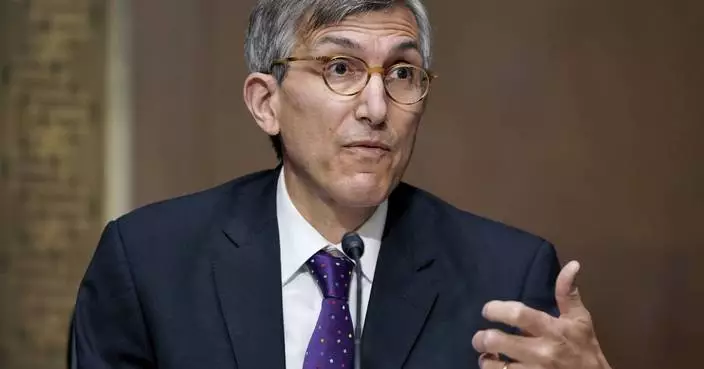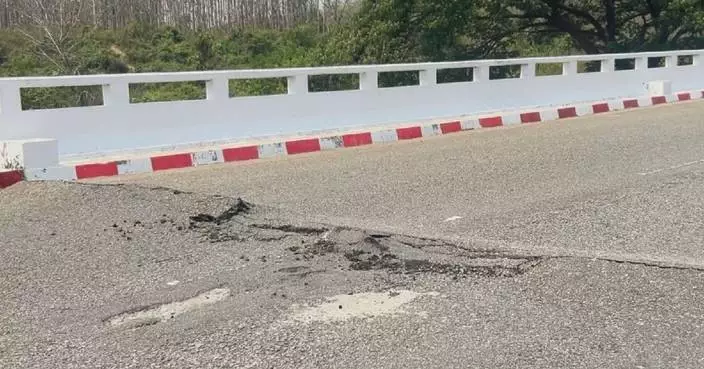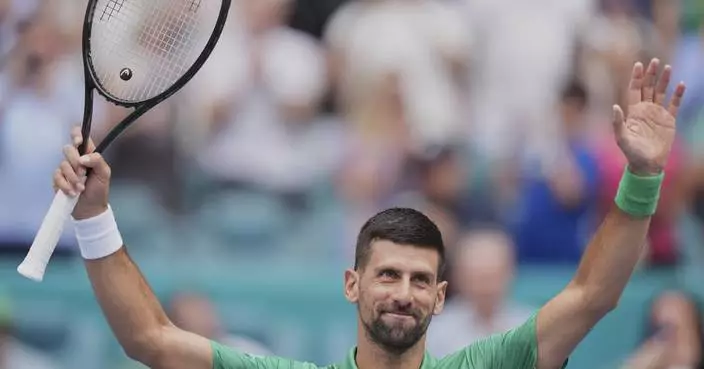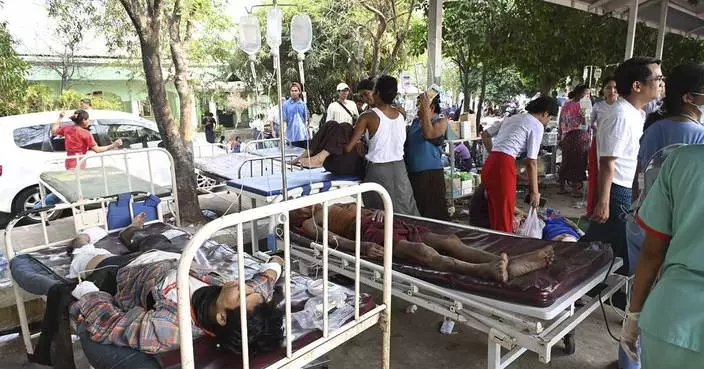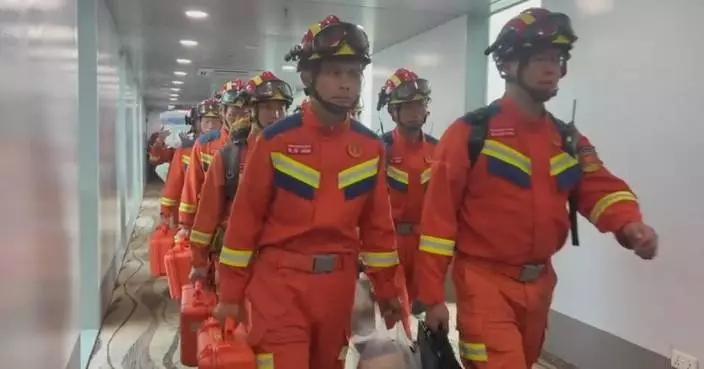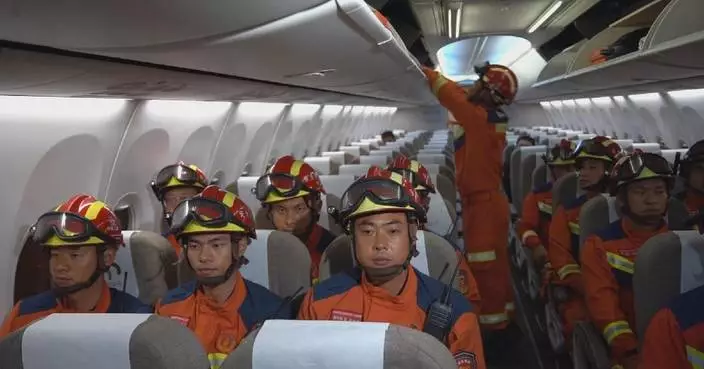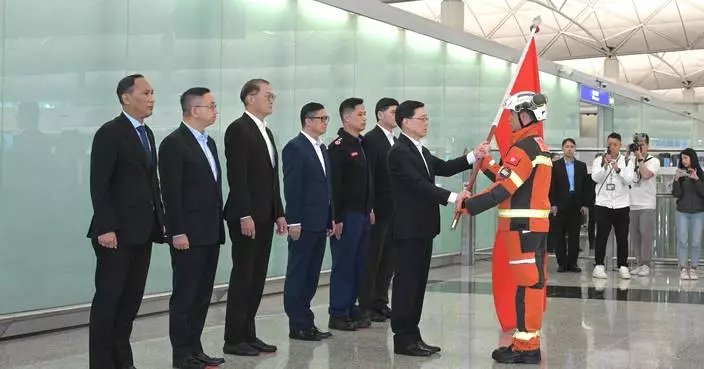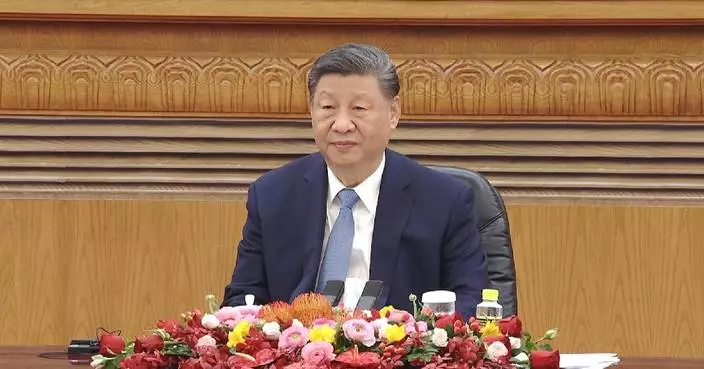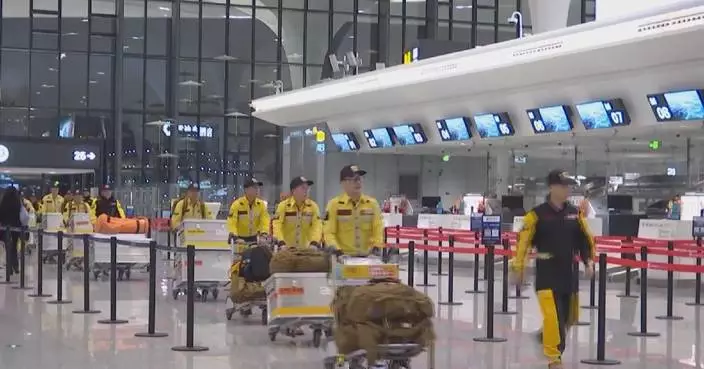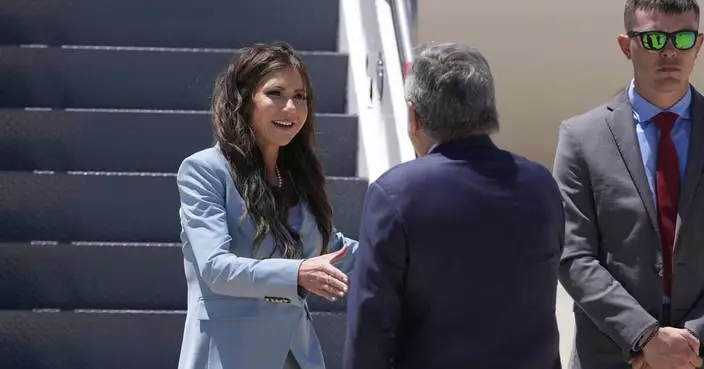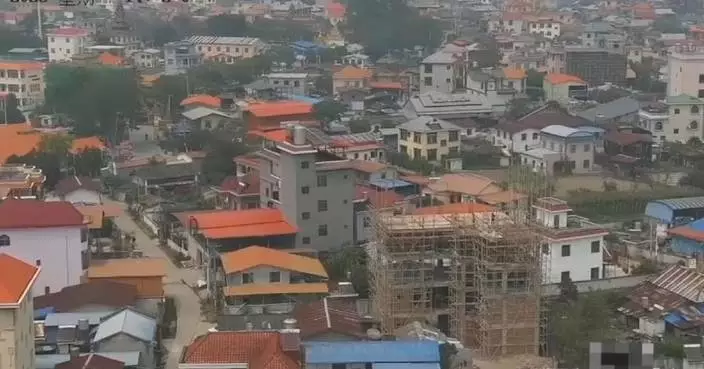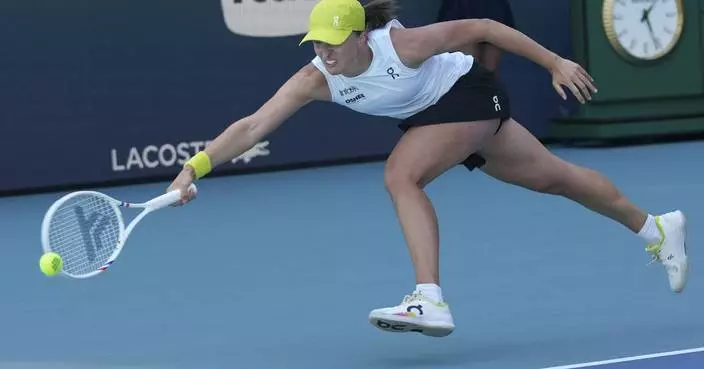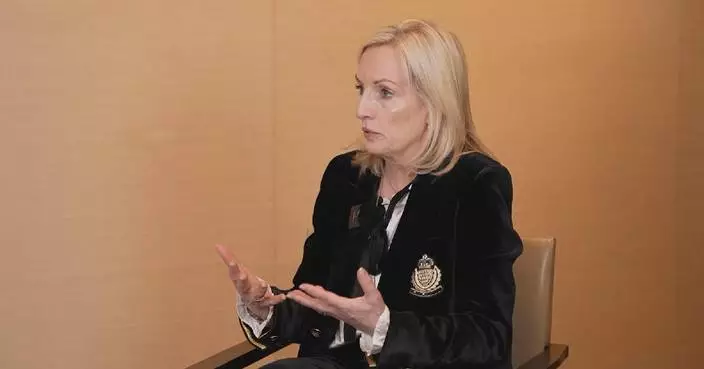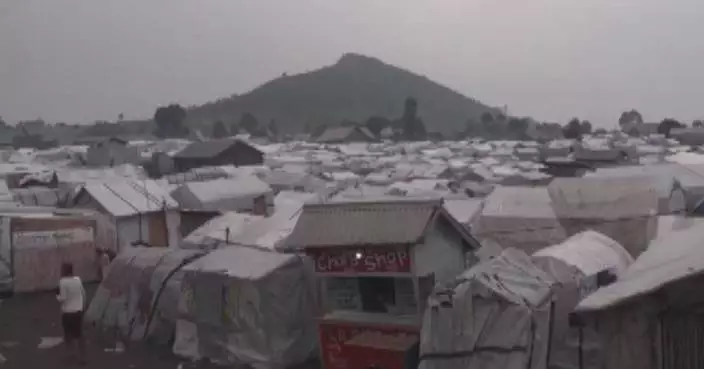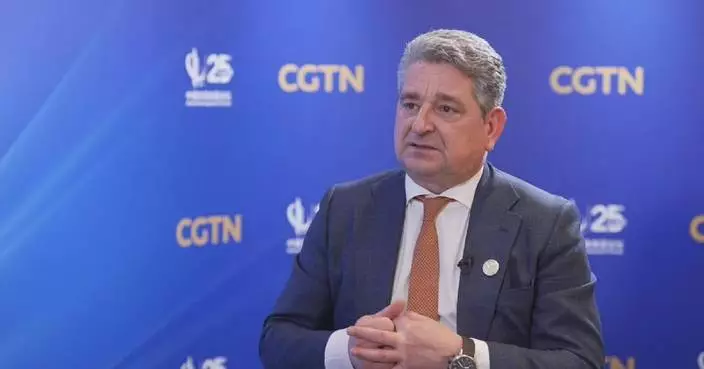CHICAGO--(BUSINESS WIRE)--Nov 19, 2024--
Snowflake (NYSE: SNOW), the AI Data Cloud company, today announced at Microsoft Ignite an expanded partnership with Microsoft to establish a new Snowflake Power Platform connector for Microsoft Power Platform, enabling bidirectional access between Dataverse, the enterprise data platform for agents, and Snowflake’s AI Data Cloud. The connector simplifies data interoperability between Microsoft Power Platform, Microsoft’s low-code/no-code services suite, Dynamics 365, and the Snowflake AI Data Cloud, giving developers and business users the power to build and leverage custom enterprise AI applications using their enterprise data in Snowflake. With this latest integration, Snowflake and Microsoft will help customers simplify data collaboration, enhance enterprise insights, and harness the power of AI for their unique business needs.
This press release features multimedia. View the full release here: https://www.businesswire.com/news/home/20241119810988/en/
By establishing a connector between Dataverse and the Snowflake AI Data Cloud, Microsoft Power Apps developers no longer need to create custom workflows and can now quickly build business applications on the Microsoft Power Platform with data from Snowflake with minimal coding effort. For IT and analytics leaders, this will dramatically reduce time spent on resource and infrastructure management, and allow them to focus on broader enterprise data needs, including high-volume transactions and near real-time analytics. All Power Apps developers will be able to create applications leveraging their data directly from Snowflake. Developers and business users now have the peace of mind that their data never leaves the built-in governance and security of Snowflake’s platform as they build, launch, and leverage new applications on the Microsoft Power Platform to drive business insights. Organizations using Dynamics 365 applications will be able to integrate their data with Snowflake for holistic business insights.
“Snowflake and Microsoft have a shared vision, rooted in collaboration, to help customers gain deeper data-driven insights and break down data silos as effectively as possible,” said Christian Kleinerman, EVP of Product, Snowflake. “In the age of AI, this shared vision has taken on even greater meaning, and through our bidirectional data access integration, we’re giving developers and business users the tools they need to build powerful AI applications without the need to move or copy data - improving both collaboration and productivity. Today’s announcement deepens our partnership with Microsoft, and we look forward to continuing to innovate together in service of our customers.”
“This integration allows developers to leverage the capabilities of both Snowflake and Microsoft to develop powerful AI-first applications in the Power Platform and Copilot Studio,” said Charles Lamanna, Corporate Vice President, Business and Industry Copilot at Microsoft. “Removing barriers for developers enhances productivity, ensures IT security and governance, and provides more value for business users.”
In addition to the launch of the Snowflake Power Platform connector, earlier this year, Snowflake and Microsoft announced bidirectional data access between Snowflake AI Data Cloud and Microsoft Fabric through Apache Iceberg™. Data access from the Snowflake AI Data Cloud to Dataverse and the Microsoft Power Platform is currently in public preview. Data access from Dataverse to Snowflake is expected in early 2025.
Learn More:
About Snowflake
Snowflake makes enterprise AI easy, efficient and trusted. Thousands of companies around the globe, including hundreds of the world’s largest, use Snowflake’s AI Data Cloud to share data, build applications, and power their business with AI. The era of enterprise AI is here. Learn more at snowflake.com (NYSE: SNOW).
Forward Looking Statements
This press release contains express and implied forward-looking statements, including statements regarding (i) Snowflake’s business strategy, (ii) Snowflake’s products, services, and technology offerings, including those that are under development or not generally available, (iii) market growth, trends, and competitive considerations, and (iv) the integration, interoperability, and availability of Snowflake’s products with and on third-party platforms. These forward-looking statements are subject to a number of risks, uncertainties and assumptions, including those described under the heading “Risk Factors” and elsewhere in the Quarterly Reports on Form 10-Q and the Annual Reports on Form 10-K that Snowflake files with the Securities and Exchange Commission. In light of these risks, uncertainties, and assumptions, actual results could differ materially and adversely from those anticipated or implied in the forward-looking statements. As a result, you should not rely on any forward-looking statements as predictions of future events.
© 2024 Snowflake Inc. All rights reserved. Snowflake, the Snowflake logo, and all other Snowflake product, feature and service names mentioned herein are registered trademarks or trademarks of Snowflake Inc. in the United States and other countries. All other brand names or logos mentioned or used herein are for identification purposes only and may be the trademarks of their respective holder(s). Snowflake may not be associated with, or be sponsored or endorsed by, any such holder(s).


Snowflake and Microsoft Simplify AI App Development and Data Collaboration with Connector for Microsoft Power Platform and Microsoft Dynamics 365 (Graphic: Business Wire)
KYIV, Ukraine (AP) — Russian forces are preparing to launch a fresh military offensive in the coming weeks to maximize pressure on Ukraine and strengthen the Kremlin's negotiating position in ceasefire talks, Ukrainian government and military analysts said.
The move could give Russian President Vladimir Putin every reason to delay discussions about pausing the fighting in favor of seeking more land, the Ukrainian officials said this week, renewing their country's repeated arguments that Russia has no intention of engaging in meaningful dialogue to end the war.
With the spring fighting season drawing near, the Kremlin is eyeing a multi-pronged push across the 1,000-kilometer (621-mile) front line, according to the analysts and military commanders.
Citing intelligence reports, Ukrainian President Volodymyr Zelenskyy said Russia is getting ready for new offensives in the northeast in the Sumy, Kharkiv and Zaporizizhia regions.
“They’re dragging out the talks and trying to get the U.S. stuck in endless and pointless discussions about fake ‘conditions’ just to buy time and then try to grab more land,” Zelenskyy said Thursday in a visit to Paris.
Two G7 diplomatic officials in Kyiv agreed with that assessment. They spoke on condition of anonymity because they were not authorized to brief the press.
Russia has effectively rejected a U.S. proposal for an immediate and full 30-day halt in the fighting, and the feasibility of a partial ceasefire on the Black Sea was thrown into doubt after Kremlin negotiators imposed far-reaching conditions.
Four people died and 24 were injured Friday evening after Russian drones struck Dnipro in the country's east, according to regional Gov. Serhii Lysak and Ukraine's emergency service. At least eight more people were injured when a Russian ballistic missile struck nearby Kryvyi Rih, Zelenskyy's hometown, Gov. Lysak reported.
Battlefield success is clearly in Putin's mind.
“On the entire front line, the strategic initiative is completely in the hands of the Russian armed forces,” Putin said Thursday at a forum in the Arctic port of Murmansk. "Our troops, our guys are moving forward and liberating one territory after another, one settlement after another, every day.”
Ukrainian military commanders said Russia recently stepped up attacks to improve its tactical positions ahead of the expected broader offensive.
“They need time until May, that’s all,” said Ukrainian military analyst Pavlo Narozhnyi, who works with soldiers and learns about intelligence from them.
In the north, Russian and North Korean soldiers have nearly deprived Kyiv of an essential bargaining chip by retaking most of Russia’s Kursk region, where Ukrainian soldiers staged a daring incursion last year. Battles have also escalated along the eastern front in Donetsk and Zaporizhzhia.
A concern among some commanders is whether Russia might divert battle-hardened forces from Kursk to other parts of the east.
“It will be hard. The forces from Kursk will come on a high from their wins there," said a Ukrainian battalion commander in the Donetsk region, who spoke on condition of anonymity to describe his concerns.
“They are preparing offensive actions on the front that should last from six to nine months, almost all of 2025,” said Ukrainian military analyst Oleksii Hetman, who has connections to the military's general staff.
Russia entered negotiations with a clear advantage in the war. Now, after recapturing 80% of its territory in the Kursk region ahead of talks, its forces have intensified their fighting across other parts of the front line.
“The number of clashes on the front line is not decreasing," Hetman said. "If they wanted to stop the war, their actions certainly don’t show it.”
Russia ramped up reconnaissance missions to find and destroy firing positions, drone systems and other capabilities that could impede a future onslaught, two Ukrainian commanders said.
“These can be all signs that an attack is being prepared in the near future,” Hetman said.
The Russian Defense Ministry on Saturday also claimed that its troops had taken a village in Ukraine’s Sumy region, across the border from Kursk. Zelenskyy earlier named the province as one of the targets for a Russian spring offensive. The Russian claim could not be independently verified, and Ukraine did not comment.
Fighting also intensified in the eastern city of Pokrovsk, one of Ukraine’s main defensive strongholds and a key logistics hub in the Donetsk region. Its capture would bring Russia closer to its stated aim of capturing the entire region.
“The Russians were significantly exhausted over the past two months. During 10 days of March, they took a sort of pause,” military spokesman Maj. Viktor Trehubov said of the situation in Pokrovsk. In mid-March, the attack resumed. “This means the Russians have simply recovered.”
A Ukrainian soldier with the call sign “Italian” said Russia was conducting intensive reconnaissance in his area of responsibility in the Pokrovsk region. Radio intercepts and intelligence show a buildup of forces in the area around Selidove, a city in the Pokrovsk region, and the creation of ammunition reserves, he said.
The buildup includes large armored vehicles, and the many new call signs overheard in radio transmissions suggest that fresh forces are coming in, he said.
Farther south, a military blog run by Mikhail Zvinchuk, a former officer of the Russian Defense Ministry’s press section, noted last week that Russian troops recently unleashed a new offensive west of Orikhiv in the Zaporizhzhia region.
The offensive will allow Russian forces to move toward the city of Zaporizhzhia and "force the enemy to redeploy its troops from other sectors, leaving Robotyne and Mala Tokmachka badly protected,” the blog known as Rybar said, adding that the new offensive “could be the first step toward the liberation of the Zaporizhzhia region.”
On Friday, Vladyslav Voloshyn, a spokesman for the Southern Defense Forces of Ukraine, said the situation in the region is fraught after Russia amassed more forces to conduct assaults with small groups of infantry.
Russian analysts project optimism that a future offensive will succeed.
“Both sides are actively preparing for the spring-summer campaign,” Sergey Poletaev, a Moscow-based military analyst, wrote in a recent commentary. “There’s a growing sense that the Ukrainian forces may be struggling to prepare for it adequately."
Meanwhile at the negotiating table, Russian demands have curtailed the results of much-anticipated negotiations brokered by the U.S.
Earlier this month, after Russia effectively turned down the U.S. proposal for a complete, monthlong halt in the fighting, Moscow tentatively agreed to a partial ceasefire on Black Sea shipping routes.
But that agreement was quickly cast into doubt by Russia's insistence on far-reaching conditions that its state bank be reconnected to the SWIFT international payment system, something Kyiv and the EU rejected outright.
Along the front line, the reported ups and downs of the talks fuel frustration and worry.
“No one believes in them,” said the Ukrainian soldier known as Italian, who spoke on the condition that he be identified only by his call sign in keeping with military protocol. “But there is still hope that the conflict will move in another direction. Everyone is waiting for some changes in the combat zone because it is not good for us now. We really don’t want to admit that."
Associated Press journalists Volodymyr Yurchuk and Dmytro Zhyhinas contributed to this report.

FILE - Ukrainian servicemen collect damaged ammunition on the road at the front line near Chasiv Yar town, in Donetsk region, Ukraine, Jan. 10, 2025. (Oleg Petrasiuk/Ukraine's 24th Mechanised Brigade via AP, File)
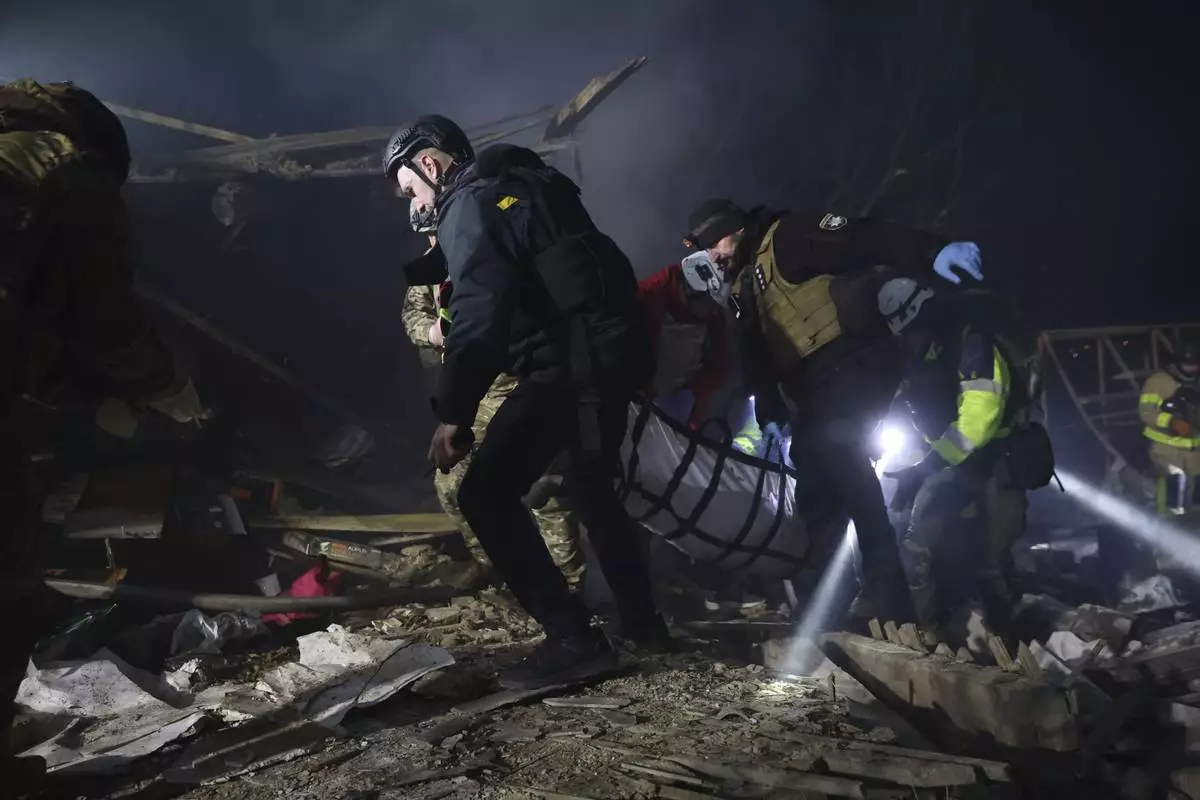
Police officers carry the body of a person killed by a Russian drone strike in a residential neighborhood in Zaporizhzhia, Ukraine, Friday, March 21, 2025. (AP Photo/Kateryna Klochko)
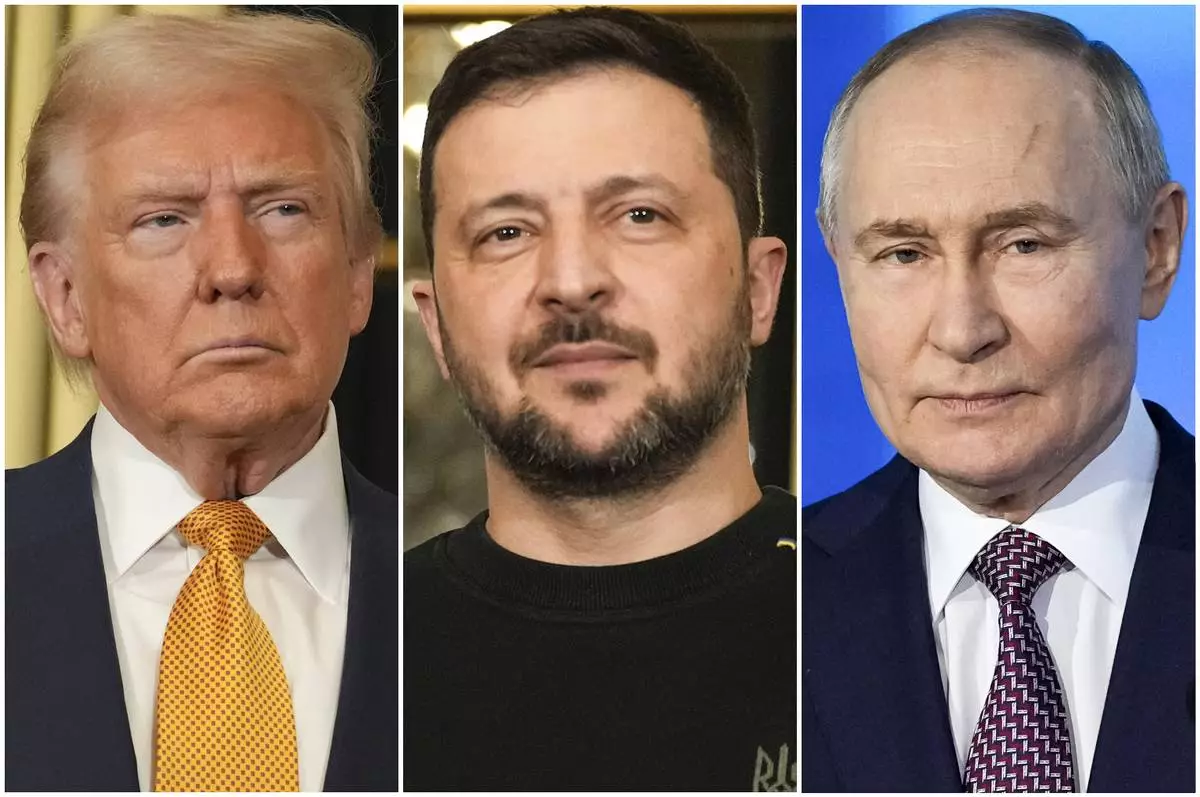
FILE - In this combination of file photos, President Donald Trump, left, and Ukraine's President Volodymyr Zelenskyy, center, are seen at the Elysee Palace, Dec. 7, 2024 in Paris, and President Vladimir Putin, right, addresses a Technology Forum in Moscow, Russia, Feb. 21, 2025. (AP Photo/Aurelien Morissard, left and center, Pavel Bednyakov, right, File)
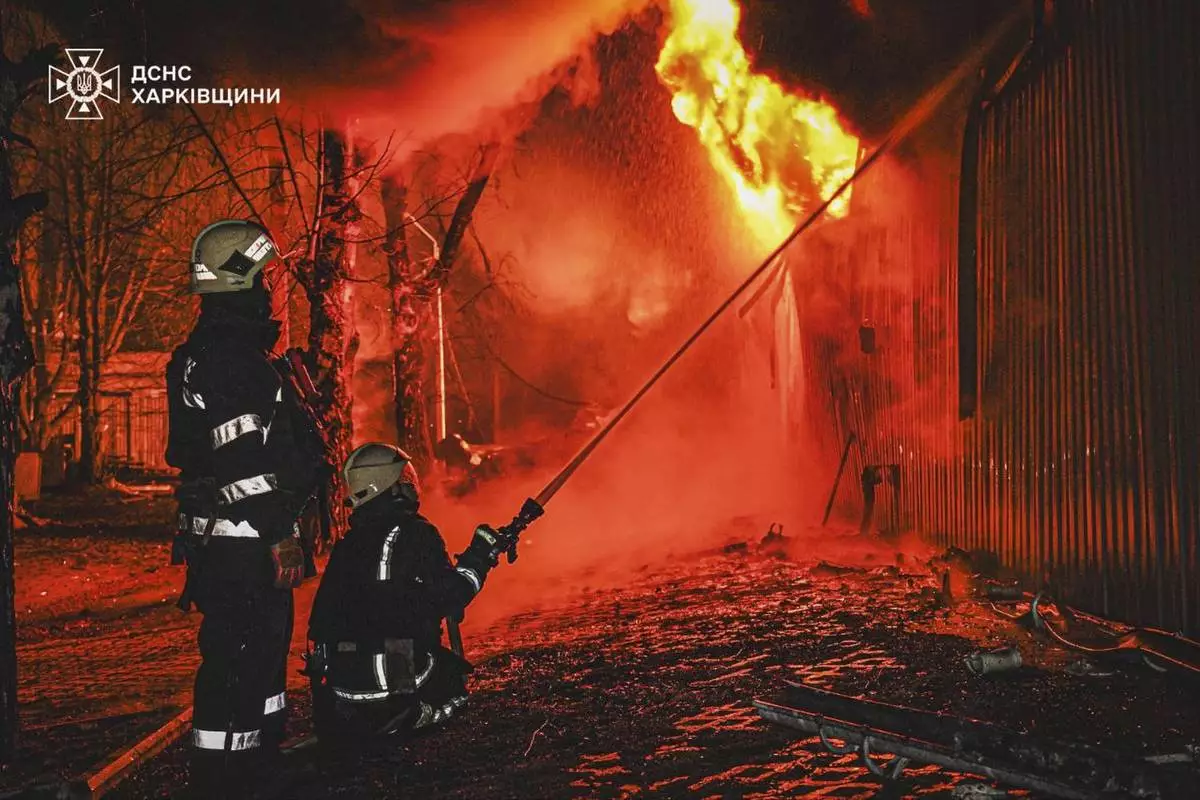
In this photo provided by the Ukrainian Emergency Service, firefighters put out the fire following a Russian attack in Kharkiv, Ukraine, Thursday, March 27, 2025. (Ukrainian Emergency Service via AP)
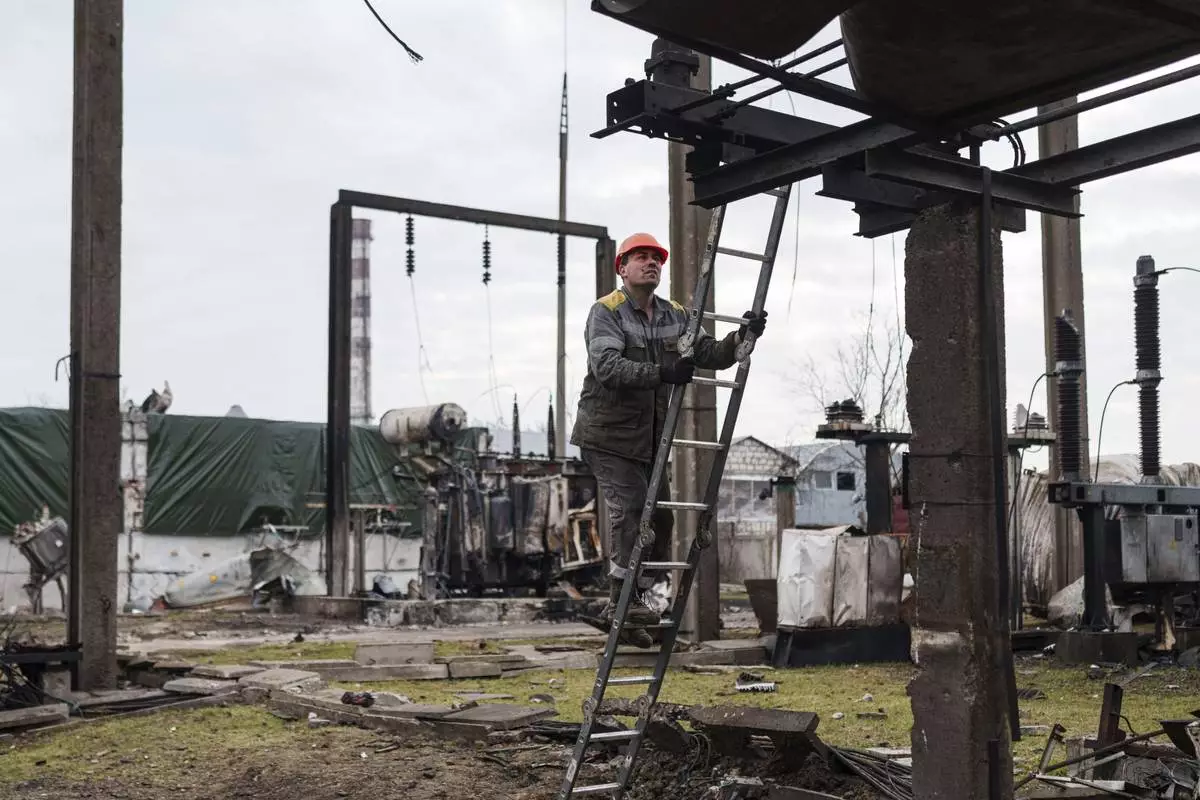
A worker of DTEK company climbs up stepladder during repair works of a substation destroyed by a Russian drone strike in undisclosed location, Ukraine, March 25, 2025. (AP Photo/Evgeniy Maloletka)
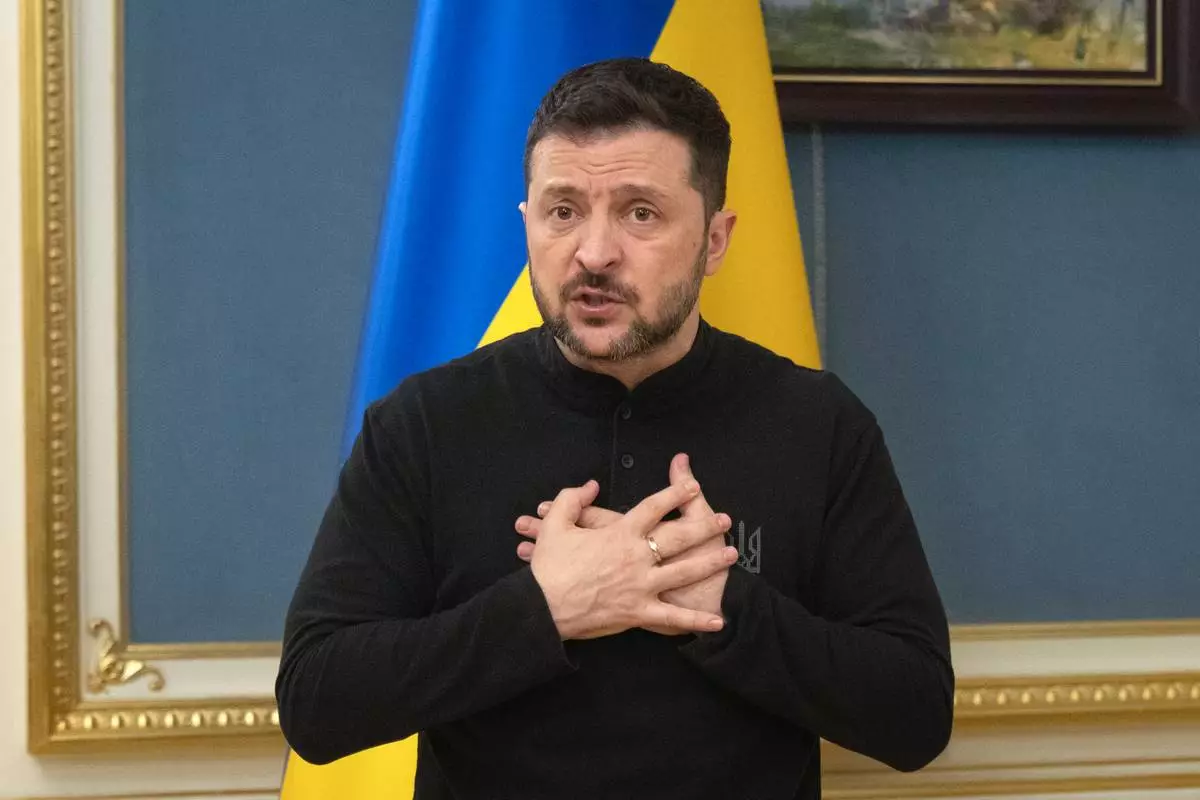
Ukrainian President Volodymyr Zelenskyy speaks during a briefing in Kyiv, Ukraine, Tuesday, March 25, 2025. (AP Photo/Efrem Lukatsky)
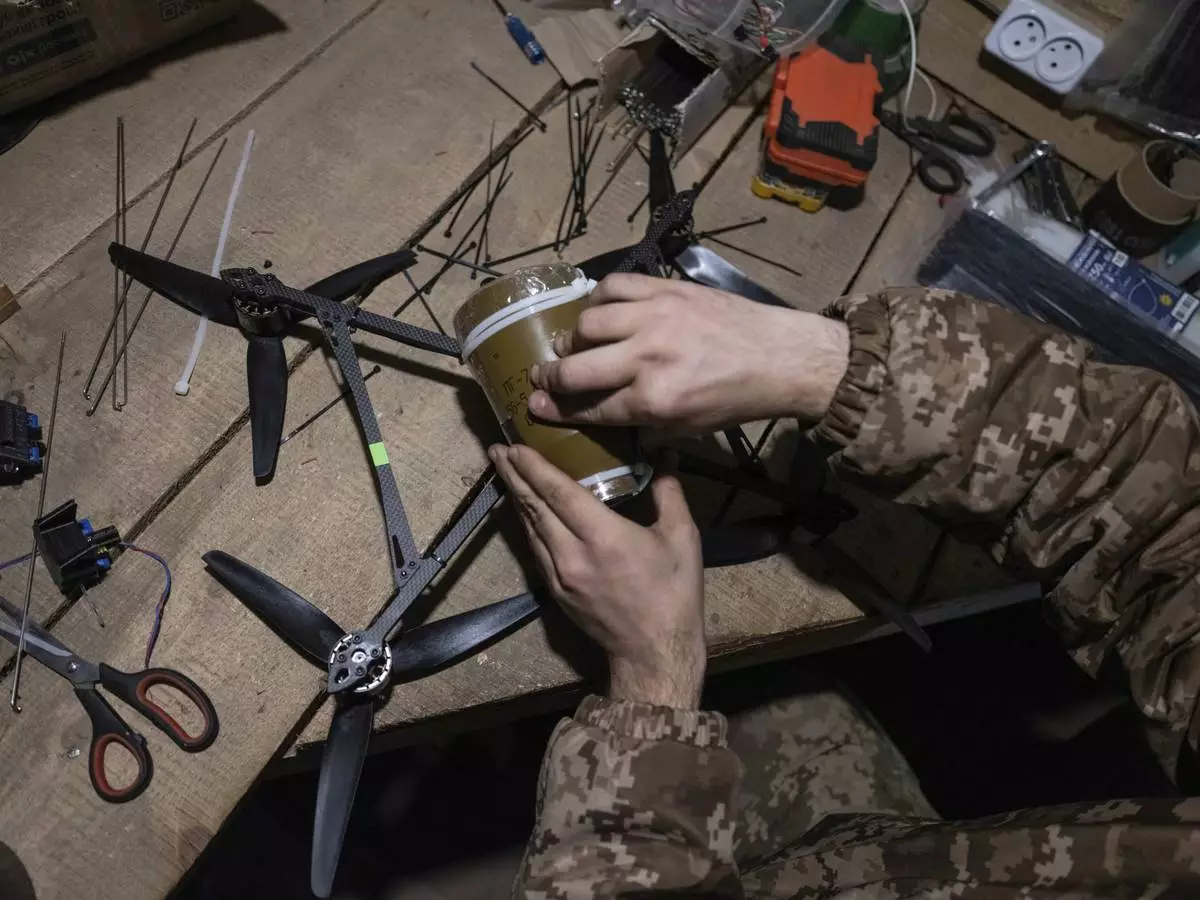
In this photo provided by Ukraine's 93rd Kholodnyi Yar Separate Mechanized Brigade press service, a soldier in a shelter gets ready to fire FPV drones towards Russian positions in a shelter in Kramatorsk direction, Donetsk region, Ukraine, Saturday, March 22, 2025. (Iryna Rybakova/Ukraine's 93rd Mechanized Brigade via AP)
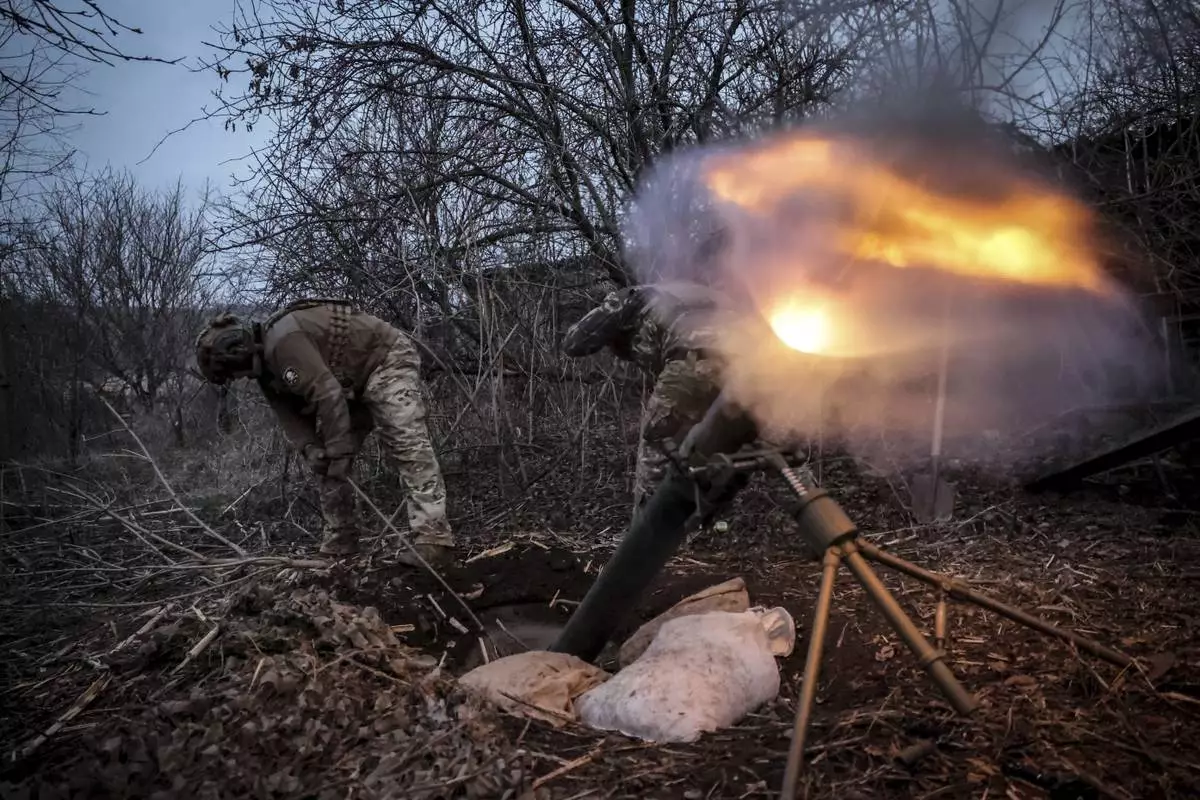
In this photo taken on March 16, 2025 and provided by Ukraine's 24th Mechanized Brigade press service, Ukrainian soldiers fire 120mm mortar towards Russian army positions near Chasiv Yar, Donetsk region, Ukraine, Sunday, March 16, 2025. (Oleg Petrasiuk/Ukraine's 24th Mechanized Brigade via AP)
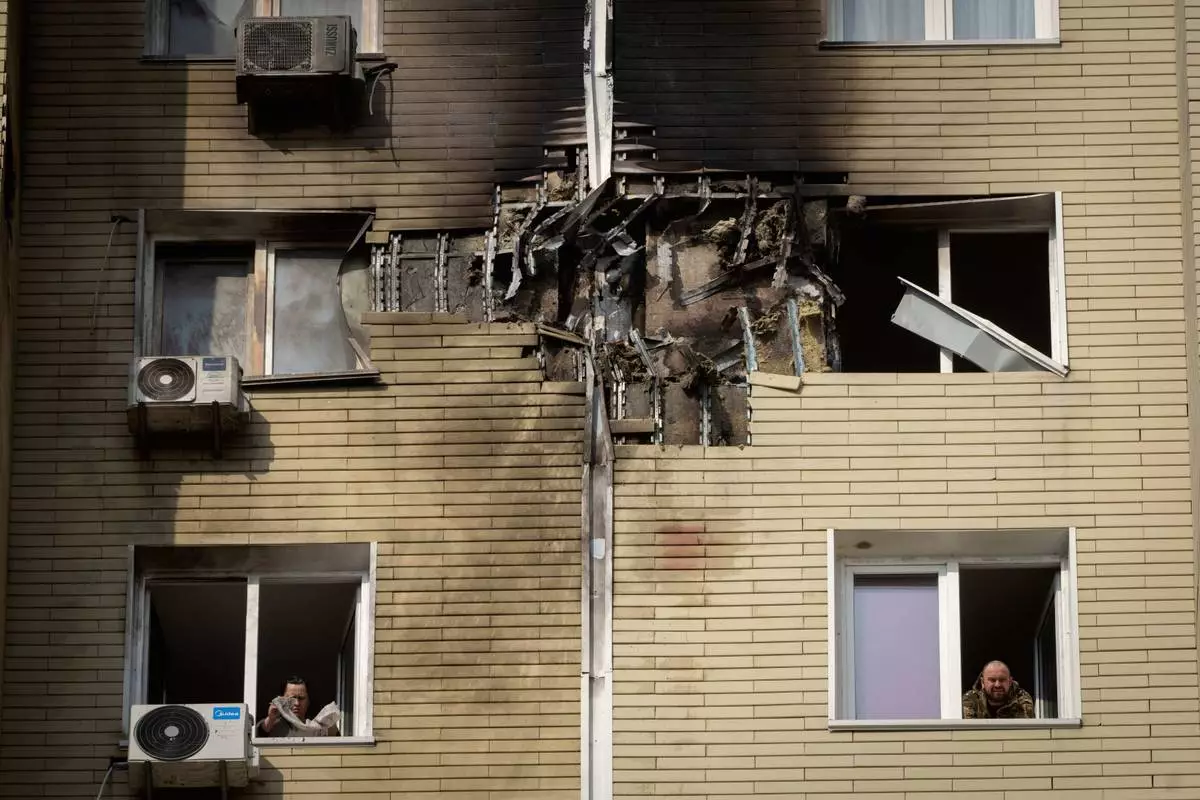
A resident watches as his neighbour cleans up the damaged apartment in a multi-storey house after a Russian night drone attack in Kyiv, Ukraine, Sunday, March 23, 2025. (AP Photo/Efrem Lukatsky)
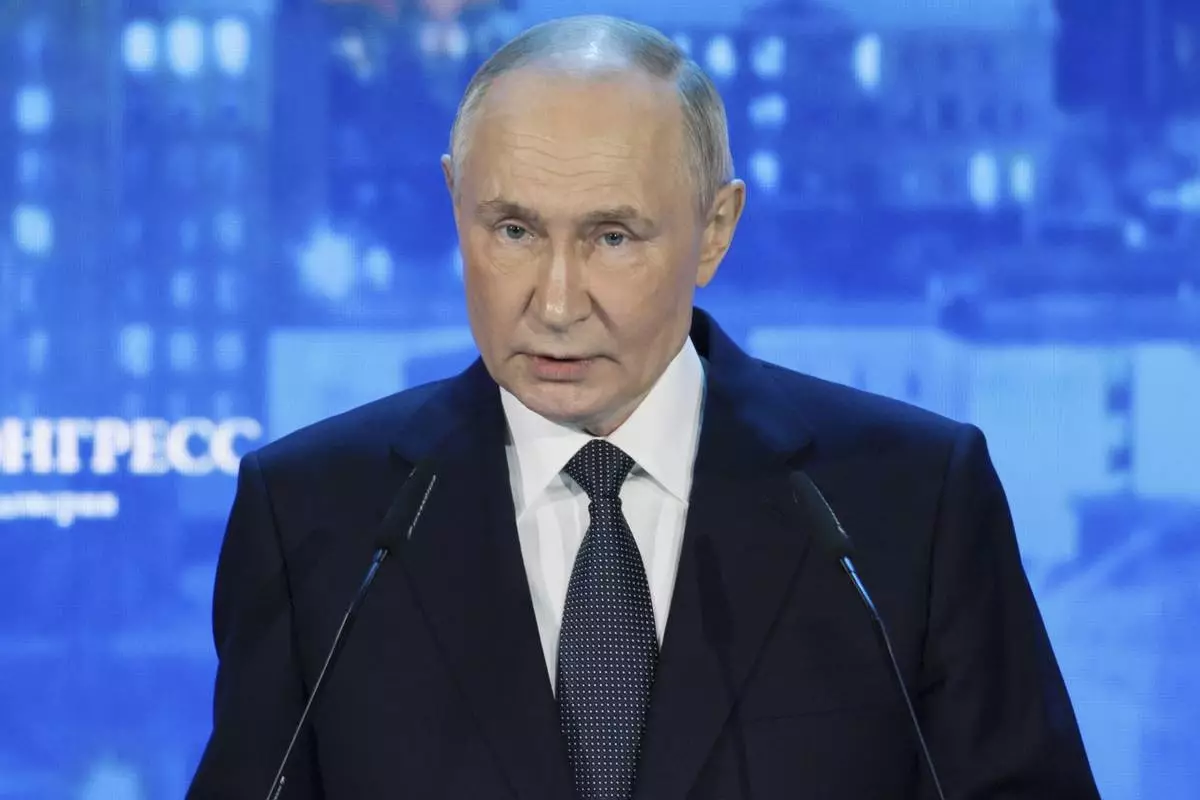
Russian President Vladimir Putin speaks at the plenary session of the International Arctic Forum in Murmansk, Russia, Thursday, March 27, 2025. (Gavriil Grigorov, Sputnik, Kremlin Pool Photo via AP)
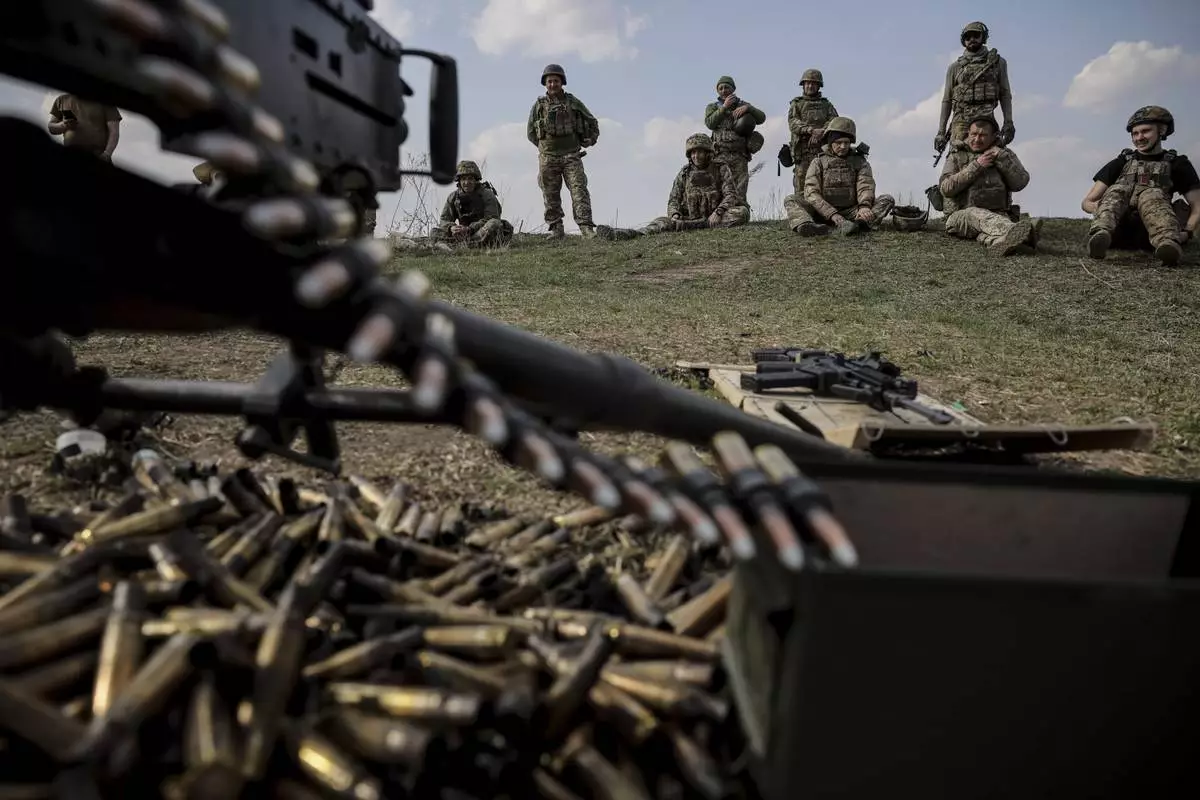
In this provided by Ukraine's 24th Mechanized Brigade press service, servicemen of 3rd mechanized battalion, practice on the training ground at an undisclosed location in the east of Ukraine, Thursday, March 27, 2025. (Oleg Petrasiuk/Ukraine's 24th Mechanized Brigade via AP)



















